1. COVIDSurg Collaborative. GlobalSurg Collaborative. Timing of surgery following SARS-CoV-2 infection: an international prospective cohort study. Anaesthesia. 2021; 76(6):748–758. PMID:
33690889.
2. Saynhalath R, Alex G, Efune PN, Szmuk P, Zhu H, Sanford EL. Anesthetic complications associated with severe acute respiratory syndrome coronavirus 2 in pediatric patients. Anesth Analg. 2021; 133(2):483–490. PMID:
33886516.

3. Peterson MB, Gurnaney HG, Disma N, Matava C, Jagannathan N, Stein ML, et al. Complications associated with paediatric airway management during the COVID-19 pandemic: an international, multicentre, observational study. Anaesthesia. 2022; 77(6):649–658. PMID:
35319088.

4. Wang L, Berger NA, Kaelber DC, Davis PB, Volkow ND, Xu R. Incidence rates and clinical outcomes of SARS-CoV-2 infection with the omicron and delta variants in children younger than 5 years in the US. JAMA Pediatr. 2022; 176(8):811–813. PMID:
35363246.

5. Bahl A, Mielke N, Johnson S, Desai A, Qu L. Severe COVID-19 outcomes in pediatrics: an observational cohort analysis comparing alpha, delta, and omicron variants. Lancet Reg Health Am. 2023; 18:100405. PMID:
36474521.

6. Kim YY, Choe YJ, Kim J, Kim RK, Jang EJ, Lee H, et al. Vaccine effectiveness against severe disease and death for patients with COVID-19 during the delta-dominant and omicron-emerging periods: a K-COVE study. J Korean Med Sci. 2023; 38(11):e87. PMID:
36942395.

7. Kim MK, Lee B, Choi YY, Um J, Lee KS, Sung HK, et al. Clinical characteristics of 40 patients infected with the SARS-CoV-2 omicron variant in Korea. J Korean Med Sci. 2022; 37(3):e31. PMID:
35040299.

8. Lee JJ, Choe YJ, Jeong H, Kim M, Kim S, Yoo H, et al. Importation and transmission of SARS-CoV-2 B.1.1.529 (omicron) variant of concern in Korea, November 2021. J Korean Med Sci. 2021; 36(50):e346. PMID:
34962117.

11. von Ungern-Sternberg BS, Boda K, Chambers NA, Rebmann C, Johnson C, Sly PD, et al. Risk assessment for respiratory complications in paediatric anaesthesia: a prospective cohort study. Lancet. 2010; 376(9743):773–783. PMID:
20816545.

12. Gai N, Maynes JT, Aoyama K. Unique challenges in pediatric anesthesia created by COVID-19. J Anesth. 2021; 35(3):345–350. PMID:
32770277.

13. Bryant JM, Boncyk CS, Rengel KF, Doan V, Snarskis C, McEvoy MD, et al. Association of time to surgery after COVID-19 infection with risk of postoperative cardiovascular morbidity. JAMA Netw Open. 2022; 5(12):e2246922. PMID:
36515945.

14. Quinn KL, Huang A, Bell CM, Detsky AS, Lapointe-Shaw L, Rosella LC, et al. Complications following elective major noncardiac surgery among patients with prior SARS-CoV-2 infection. JAMA Netw Open. 2022; 5(12):e2247341. PMID:
36525270.

15. El-Boghdadly K, Cook TM, Goodacre T, Kua J, Blake L, Denmark S, et al. SARS-CoV-2 infection, COVID-19 and timing of elective surgery: a multidisciplinary consensus statement on behalf of the Association of Anaesthetists, the Centre for Peri-operative Care, the Federation of Surgical Specialty Associations, the Royal College of Anaesthetists and the Royal College of Surgeons of England. Anaesthesia. 2021; 76(7):940–946. PMID:
33735942.
16. El-Boghdadly K, Cook TM, Goodacre T, Kua J, Denmark S, McNally S, et al. Timing of elective surgery and risk assessment after SARS-CoV-2 infection: an update: a multidisciplinary consensus statement on behalf of the Association of Anaesthetists, Centre for Perioperative Care, Federation of Surgical Specialty Associations, Royal College of Anaesthetists, Royal College of Surgeons of England. Anaesthesia. 2022; 77(5):580–587. PMID:
35194788.

17. Lee JH, Kim EK, Song IK, Kim EH, Kim HS, Kim CS, et al. Critical incidents, including cardiac arrest, associated with pediatric anesthesia at a tertiary teaching children’s hospital. Paediatr Anaesth. 2016; 26(4):409–417. PMID:
26896152.

18. Lee HC, Jung CW. Vital Recorder-a free research tool for automatic recording of high-resolution time-synchronised physiological data from multiple anaesthesia devices. Sci Rep. 2018; 8(1):1527. PMID:
29367620.

19. Michel F, Vacher T, Julien-Marsollier F, Dadure C, Aubineau JV, Lejus C, et al. Peri-operative respiratory adverse events in children with upper respiratory tract infections allowed to proceed with anaesthesia: a French national cohort study. Eur J Anaesthesiol. 2018; 35(12):919–928. PMID:
30124501.

20. Shen F, Zhang Q, Xu Y, Wang X, Xia J, Chen C, et al. Effect of intranasal dexmedetomidine or midazolam for premedication on the occurrence of respiratory adverse events in children undergoing tonsillectomy and adenoidectomy: a randomized clinical trial. JAMA Netw Open. 2022; 5(8):e2225473. PMID:
35943745.
21. Austin PC. Balance diagnostics for comparing the distribution of baseline covariates between treatment groups in propensity-score matched samples. Stat Med. 2009; 28(25):3083–3107. PMID:
19757444.

22. Ramgolam A, Hall GL, Zhang G, Hegarty M, von Ungern-Sternberg BS. Inhalational versus intravenous induction of anesthesia in children with a high risk of perioperative respiratory adverse events: a randomized controlled trial. Anesthesiology. 2018; 128(6):1065–1074. PMID:
29498948.

23. Hii J, Templeton TW, Sommerfield D, Sommerfield A, Matava CT, von Ungern-Sternberg BS. Risk assessment and optimization strategies to reduce perioperative respiratory adverse events in pediatric anesthesia-Part 1 patient and surgical factors. Paediatr Anaesth. 2022; 32(2):209–216. PMID:
34897906.

24. von Ungern-Sternberg BS, Habre W, Erb TO, Heaney M. Salbutamol premedication in children with a recent respiratory tract infection. Paediatr Anaesth. 2009; 19(11):1064–1069. PMID:
19694973.

25. Lee JH, Choi S, Ji SH, Jang YE, Kim EH, Kim HS, et al. Effect of an ultrasound-guided lung recruitment manoeuvre on postoperative atelectasis in children: a randomised controlled trial. Eur J Anaesthesiol. 2020; 37(8):719–727. PMID:
32068572.

26. Lee JH, Ji SH, Jang YE, Kim EH, Kim JT, Kim HS. Application of a high-flow nasal cannula for prevention of postextubation atelectasis in children undergoing surgery: a randomized controlled trial. Anesth Analg. 2021; 133(2):474–482. PMID:
33181560.

27. COVIDSurg Collaborative. Elective surgery cancellations due to the COVID-19 pandemic: global predictive modelling to inform surgical recovery plans. Br J Surg. 2020; 107(11):1440–1449. PMID:
32395848.
29. Hui KP, Ho JC, Cheung MC, Ng KC, Ching RH, Lai KL, et al. SARS-CoV-2 Omicron variant replication in human bronchus and lung ex vivo. Nature. 2022; 603(7902):715–720. PMID:
35104836.

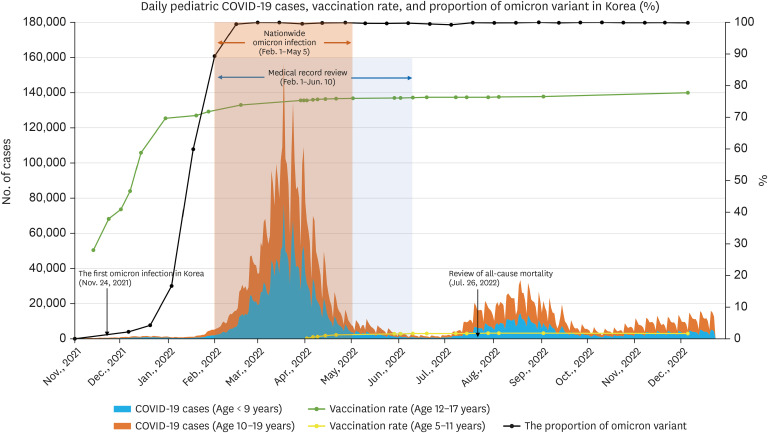
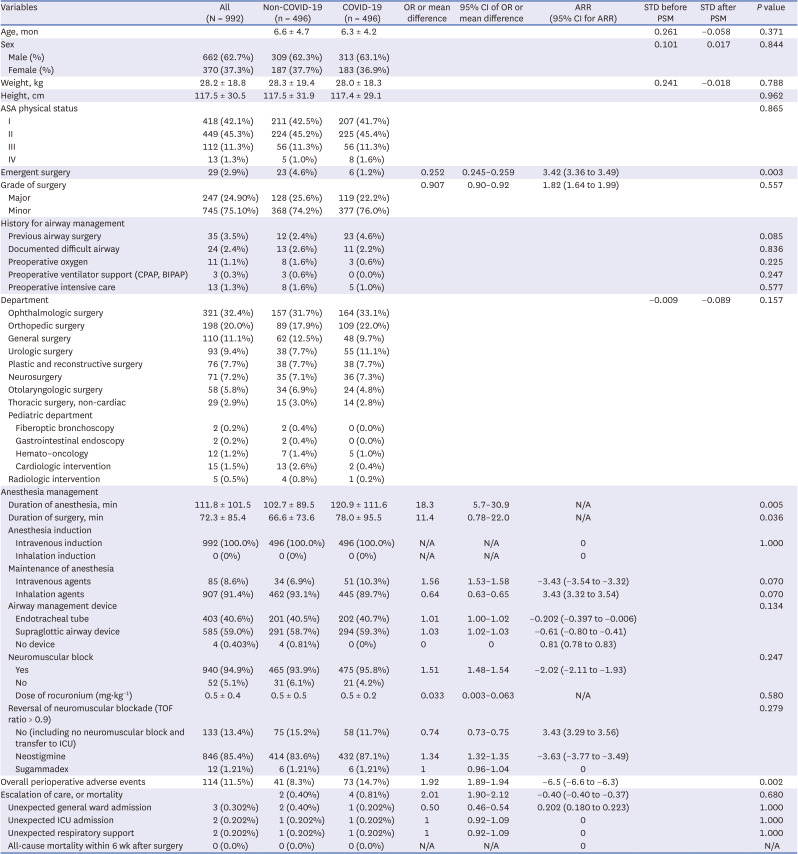
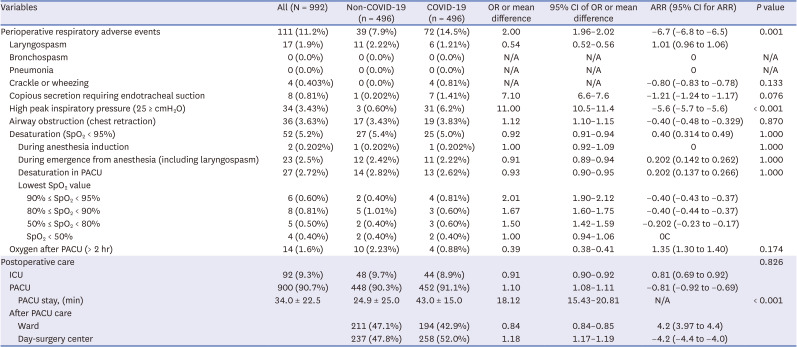

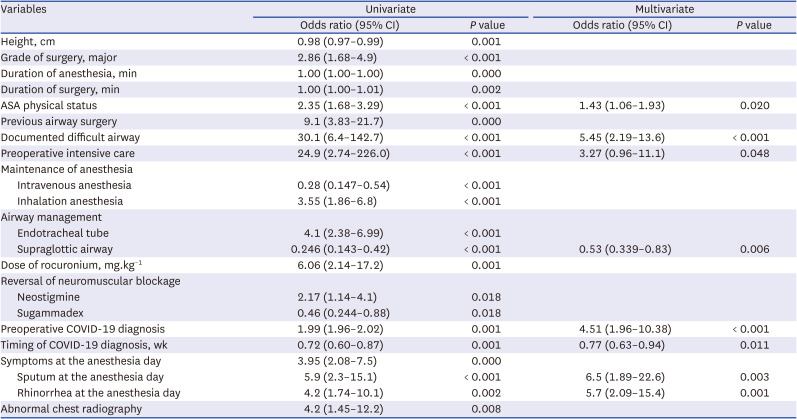
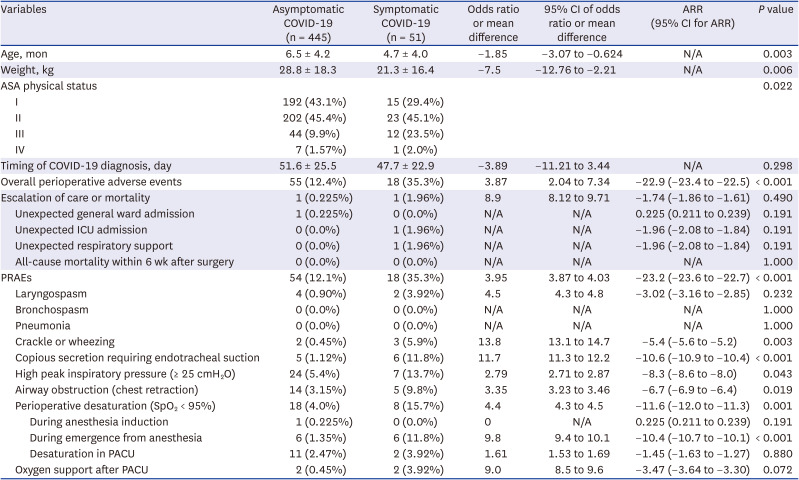




 PDF
PDF Citation
Citation Print
Print



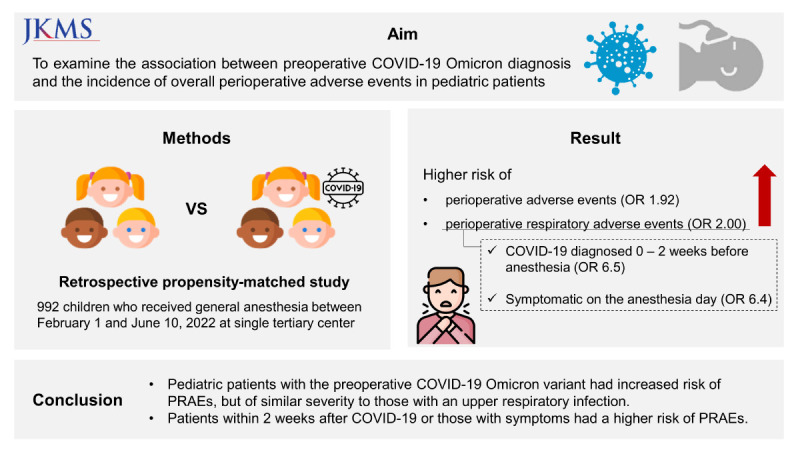
 XML Download
XML Download